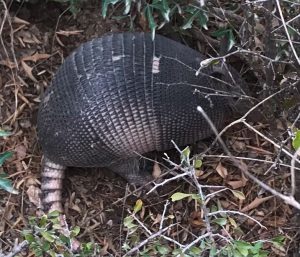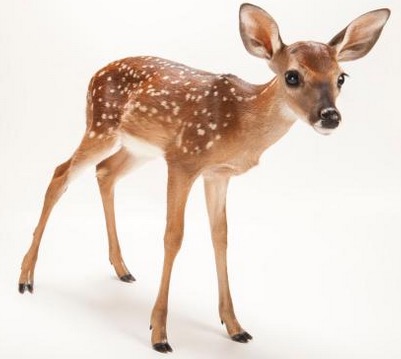In A Whitetail Christmas Santa has to make some tough decisions about who will replace his reindeer who are ill. Several groups of animals, native to West Texas, come forward offering to help. Santa decides which animals are not quite right for the job of pulling his sleigh for some very good reasons. Here are some interesting facts about each of the animals that come to Santa to offer their help.

Raccoons – Why would Santa think they might take the presents?
Raccoons are very clever, cunning, and curious animals and they are quite capable of solving problems. “Raccoons IQ has been found to be greater than a cat and just below a monkey on the mammal IQ scale. Monkeys are generally found to score just below a human, making them the next highest score when considering IQ. This concludes that raccoons are closer to human intelligence than may have been expected.”
These bandit-masked mammals have dexterous front paws with long fingers which allow them to grab their food. Their diet includes frogs, fish, mice, and insects. They are also very adept at opening garbage cans to dine on the contents inside.
Watch a raccoon open locks by copying and pasting the following site to your browser:
http://www.viewpure.com/M5JFeTtSS3c
Information from:
http://www.nedhardy.com/2020/05/07/how-smart-are-raccoons/ ,
How Smart are Raccoons, Ned Hardy, May 7, 2020
https://www.nationalgeographic.com/animals/mammals/r/raccoon
Armadillos – Why would Santa be concerned about their eyesight?
The eye has photoreceptor cells called rods and cones that are found in the retina which is in the back of the eye. These specialized cells allow us to see light and colors. Rods are highly sensitive to light and function in night vision. Cones are responsible for detecting a wide spectrum of light that allows color vision.
Armadillos eyes do not have the light-detecting cells called cones. Since the armadillos eyes do not have cones, the armadillo has colorless and fuzzy vision. The armadillo’s eyes do have rods, which are highly sensitive light-receptive cells. The rods are so sensitive to light that these nocturnal animals are practically blind in daylight or in bright light.
Armadillos, means “little armored ones” in Spanish. They have bony plates that cover the back, head, legs, and tail of these unusual looking animals. They are the only living mammals that wear these bony shells according to National Geographic, Armadillos.
Information from:
https://www.sciencemag.org/news/2013/11/sciencehot-armadillos-bad-eyesight-could-shed-light-human-blindness , ScienceShot: Armadillo’s Bad Eyesight Could Shed Light on Human Blindness, by Emily Underwood, Nov 11, 2013
https://www.nationalgeographic.com/animals/mammals/group/armadillos



Rattlesnakes – Why would Santa be afraid that they might bite?
Rattlesnakes distinguishing physical characteristics are the rattles on the tip of their tails and their triangular shaped head. They are born without rattles and they add a new rattle to their tail every time they shed their skin. Rattlesnakes shed their skin to allow them to grow larger.
They use defensive behaviors such as rattling and hissing to warn predators to stay away. They coil their bodies to raise their heads in a defensive position and to prepare to strike. They strike, or bite, as a defense and to catch their prey. Their favorite foods are small rodents and lizards. They catch their prey by striking at a speeds of five-tenths of a second according to the San Diego Zoo. Their bite releases a venom which paralyzes their prey that they then swallow whole. Adult rattlesnakes only eat about once every two weeks.
They spend time in dens in rocky crevices and they hibernate for the winter months in cold climates. When they bite humans, it is usually because they are stepped on accidentally or because humans reach into an area where the rattlesnake is hiding or resting.
Information from: https://www.Livescience.com/43683-rattlesnake.html . Rattlesnake Facts by Jessie Szalay – Live Science Contributor, December 12, 2014
Coyotes – Why does Santa say they are too noisy for flight?
The coyote uses howling as a way to communicate with other coyotes in the area. They often howl together when they reunite with their pack after a hunt according to a statement from the University of Michigan. Their howl is also used to warn other predators to stay away. Coyotes also bark, yip, growl, whine, and huff as a form of communication with each vocalization having a different intended purpose. Growling, for example, may be the coyote’s warning to a predator that is nearby to stay away. Barking may be used to warn predators that are farther away not to come near the coyote or its pack. The howling sounds of coyotes in the night carries for a distance of 1,000 yards and makes you stop and listen as it is such an eerie sound.
Watch and hear a pack of coyotes from coyotecams, Urban Coyote Pack Howling, April 16, 2017.
http://www.viewpure.com/nNV-twEcoD4
Information from: Forest Preserve District of Will County, Nature Curiosity: Why do coyotes howl? January 31, 2019
https://www.reconnectwithnature.org/news-events/the-buzz/nature-curosity-why-do-coyotes-howl
Skunks – Why does Santa say he can’t hold his nose?
Skunks don’t actually stink themselves but they have a strong, horrible smelling spray that they use to defend themselves. The spray is an oily liquid that is produced by glands under the skunk’s tail. The skunk often warns its predators with a hiss before turning around and blasting its enemy with this foul smelling mist that can travel ten feet. This spray is not harmful, although it can make your eyes water and the smell is very difficult to remove and can linger for days.
Skunks are opportunistic eaters who come out at night to forage on a variety of foods. According to National Geographic, “They eat mainly fruits, plants, insects, larvae, worms, eggs, reptiles, small mammals, and even fish.”
Information from: https://www.nationalgeographic.com/animals/mammals/s/striped-skunk


Skunks – Why does Santa say he can’t hold his nose?
Skunks don’t actually stink themselves but they have a strong, horrible smelling spray that they use to defend themselves. The spray is an oily liquid that is produced by glands under the skunk’s tail. The skunk often warns its predators with a hiss before turning around and blasting its enemy with this foul smelling mist that can travel ten feet. This spray is not harmful, although it can make your eyes water and the smell is very difficult to remove and can linger for days.
Skunks are opportunistic eaters who come out at night to forage on a variety of foods. According to National Geographic, “They eat mainly fruits, plants, insects, larvae, worms, eggs, reptiles, small mammals, and even fish.”
Information from: https://www.nationalgeographic.com/animals/mammals/s/striped-skunk
Texas Whitetail Deer – Why did Santa think they were just right?
There are about 3.6 million Whitetail Deer in Texas. The male deer are known as bucks and they have a prominent set of antlers which grow and fall off each year. The bucks’ antlers grow in the spring and fall off in the winter. They use their antlers to defend themselves and to fight off other deer especially during mating season.
The female deer are called does and do not have antlers. They give birth to one to three young a year. Their offspring are called fawns and they have a reddish-brown coat with white spots to help them hide and blend with their surroundings.
They are beautiful animals who particularly like to eat herbaceous, broadleaf plants. According to National Geographic, “Their stomachs allow them to digest a varied diet including twigs, fruits, nuts, grass, corn, alfalfa, and even lichens and other fungi.”
Whitetails use their tails as flags so when you see them lift that white tail, it is a warning to other deer that they have spotted a predator. Whitetail deer use their agility to outrun their foes. They can run up to 30 miles an hour and they can jump up to 10 feet high and as far as 30 feet in a single bound.
Whitetail deer’s eyesight is quite different than a human’s eyesight. They focus horizontally rather than vertically. Deer see at a 300 degree angle all around them as compared to a human who sees 120 degrees around them. They do not focus well when looking straight ahead. However, because their eyes have special rods, horizontally slit pupils, and a reflective substance in the back of their eyes a whitetail deer can see 50 times better at night than humans!
Information from:
https://www.nationalgeographic.com/animals/mammals/w/white-tailed-deer
Deer Busters, What We Know About Deer Eyesight, Posted by Jennifer Smith, August 15, 2016
https://www.texashillcountry.com/5-facts-texas-deer
